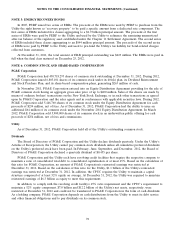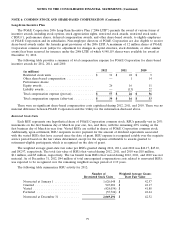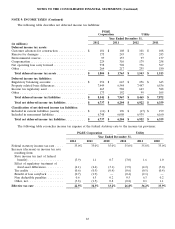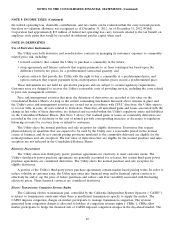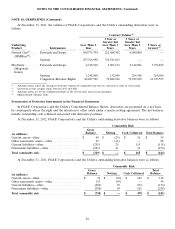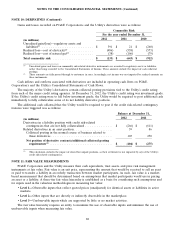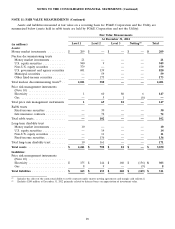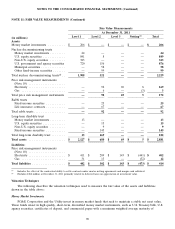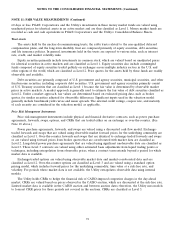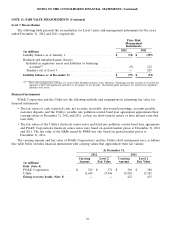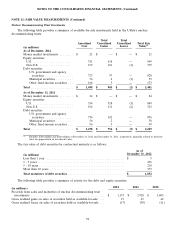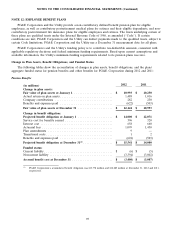PG&E 2012 Annual Report Download - page 90
Download and view the complete annual report
Please find page 90 of the 2012 PG&E annual report below. You can navigate through the pages in the report by either clicking on the pages listed below, or by using the keyword search tool below to find specific information within the annual report.
NOTES TO THE CONSOLIDATED FINANCIAL STATEMENTS (Continued)
NOTE 10: DERIVATIVES (Continued)
CAISO releases CRRs through an annual and monthly process, each of which includes an allocation phase (in which
load-serving entities, such as the Utility, are allocated CRRs at no cost based on the customer demand or ‘‘load’’
they serve) and an auction phase (in which CRRs are priced at market and available to all market participants). The
Utility participates in the allocation and auction phases of the annual and monthly CRR processes. CRRs are
considered derivatives.
Natural Gas Procurement (Electric Fuels Portfolio)
The Utility’s electric procurement portfolio is exposed to natural gas price risk primarily through physical natural
gas commodity purchases to fuel natural gas generating facilities, and electricity procurement contracts indexed to
natural gas prices. To reduce the volatility in customer rates, the Utility may enter into financial swap contracts or
financial option contracts, or both. The Utility also enters into fixed-price forward contracts for natural gas to reduce
future cash flow variability from fluctuating natural gas prices. These instruments are considered derivatives.
Natural Gas Procurement (Core Gas Supply Portfolio)
The Utility enters into physical natural gas commodity contracts to fulfill the needs of its residential and smaller
commercial customers known as ‘‘core’’ customers. The Utility does not procure natural gas for industrial and large
commercial, or ‘‘non-core,’’ customers. Changes in temperature cause natural gas demand to vary daily, monthly, and
seasonally. Consequently, varying volumes of natural gas may be purchased or sold in the multi-month, monthly, and
to a lesser extent, daily spot market to balance such seasonal supply and demand. The Utility purchases financial
instruments, such as swaps and options, as part of its core winter hedging program in order to manage customer
exposure to high natural gas prices during peak winter months. These financial instruments are considered
derivatives.
Volume of Derivative Activity
At December 31, 2012, the volumes of PG&E Corporation’s and the Utility’s outstanding derivatives were as
follows:
Contract Volume(1)
1 Year or 3 Years or
Greater but Greater but
Underlying Less Than 1 Less Than 3 Less Than 5 5 Years or
Product Instruments Year Years Years Greater(2)
Natural Gas(3) .... Forwards and Swaps 329,466,510 98,628,398 5,490,000 —
(MMBtus(4))
Options 221,587,431 216,279,767 10,050,000 —
Electricity ....... Forwards and Swaps 2,537,023 3,541,046 2,009,505 2,538,718
(Megawatt-
hours)
Options — 239,015 239,233 119,508
Congestion Revenue Rights 74,198,690 74,187,803 74,240,147 25,699,804
(1) Amounts shown reflect the total gross derivative volumes by commodity type that are expected to settle in each period.
(2) Derivatives in this category expire between 2018 and 2023.
(3) Amounts shown are for the combined positions of the electric fuels and core gas portfolios.
(4) Million British Thermal Units.
86




